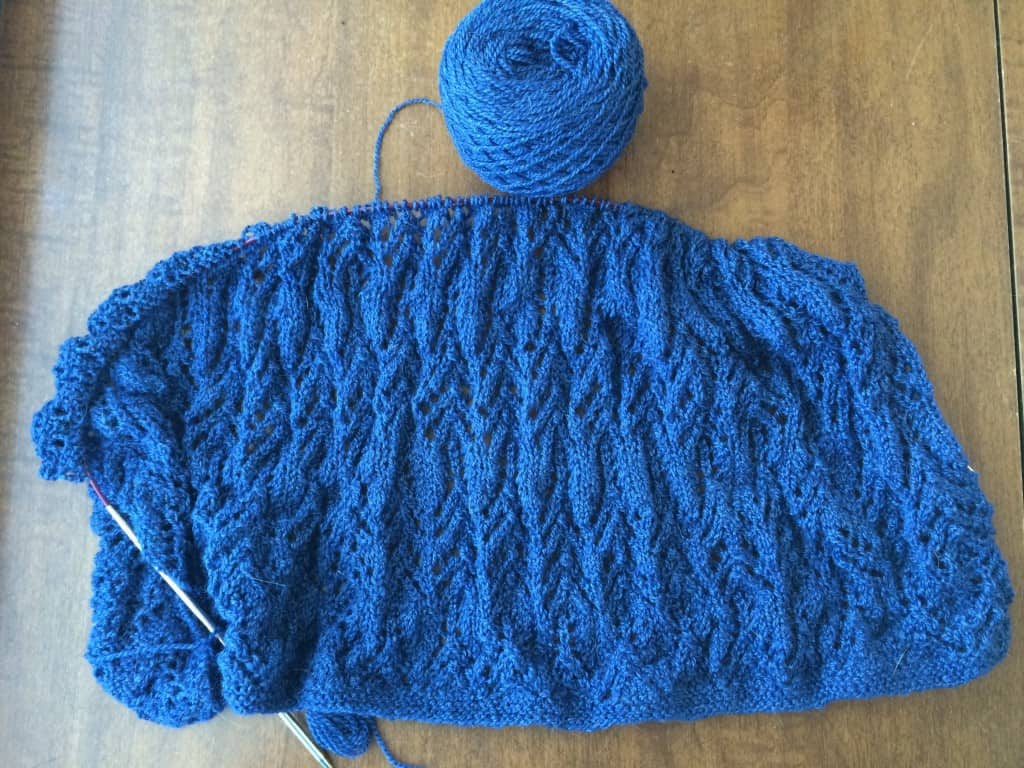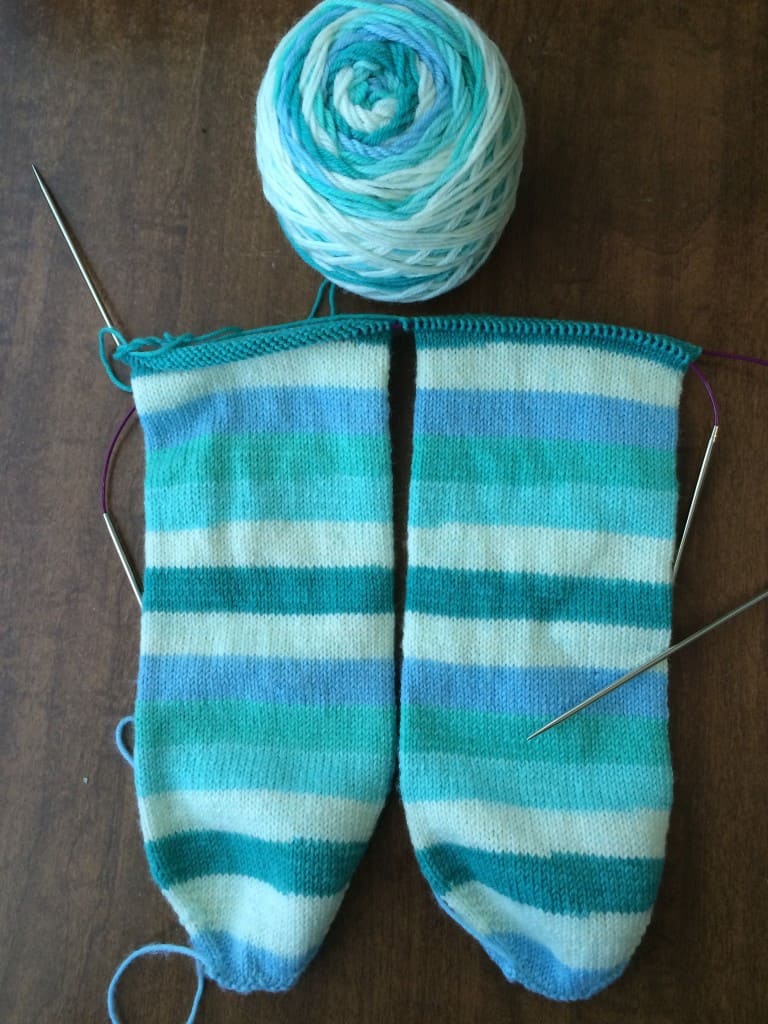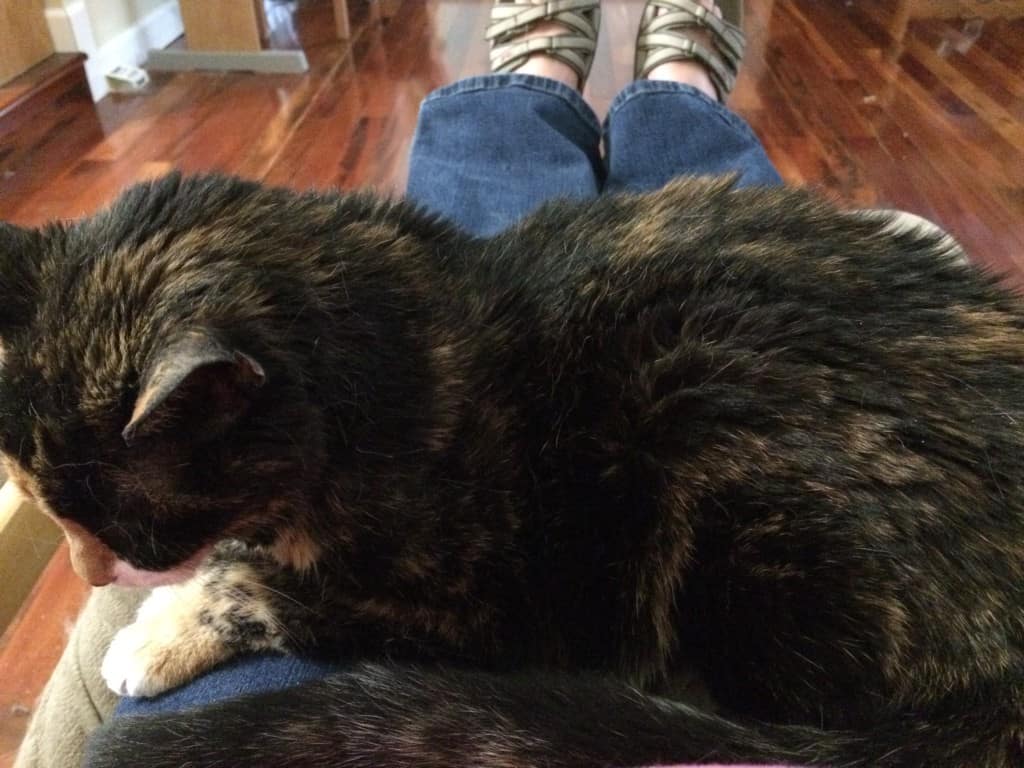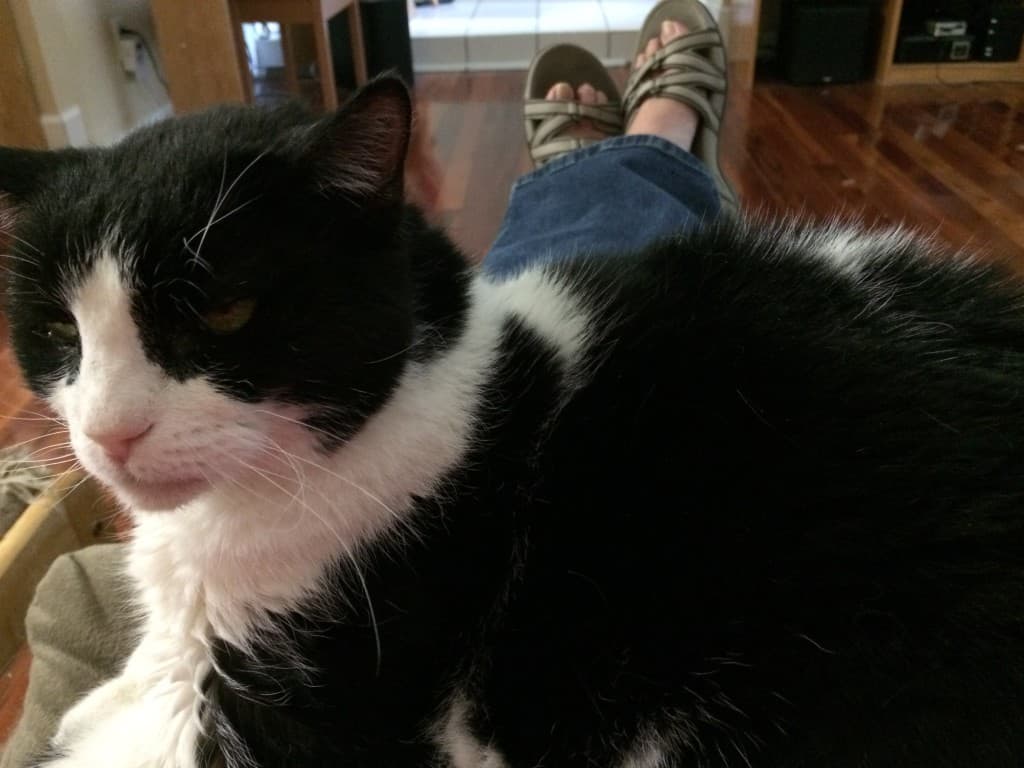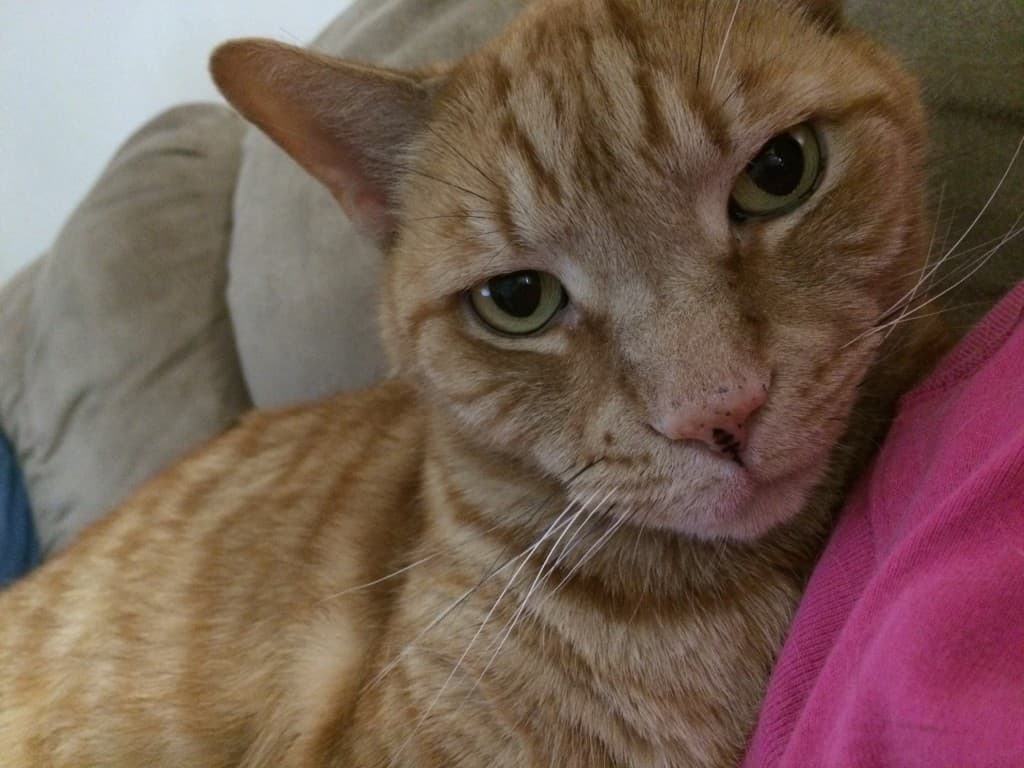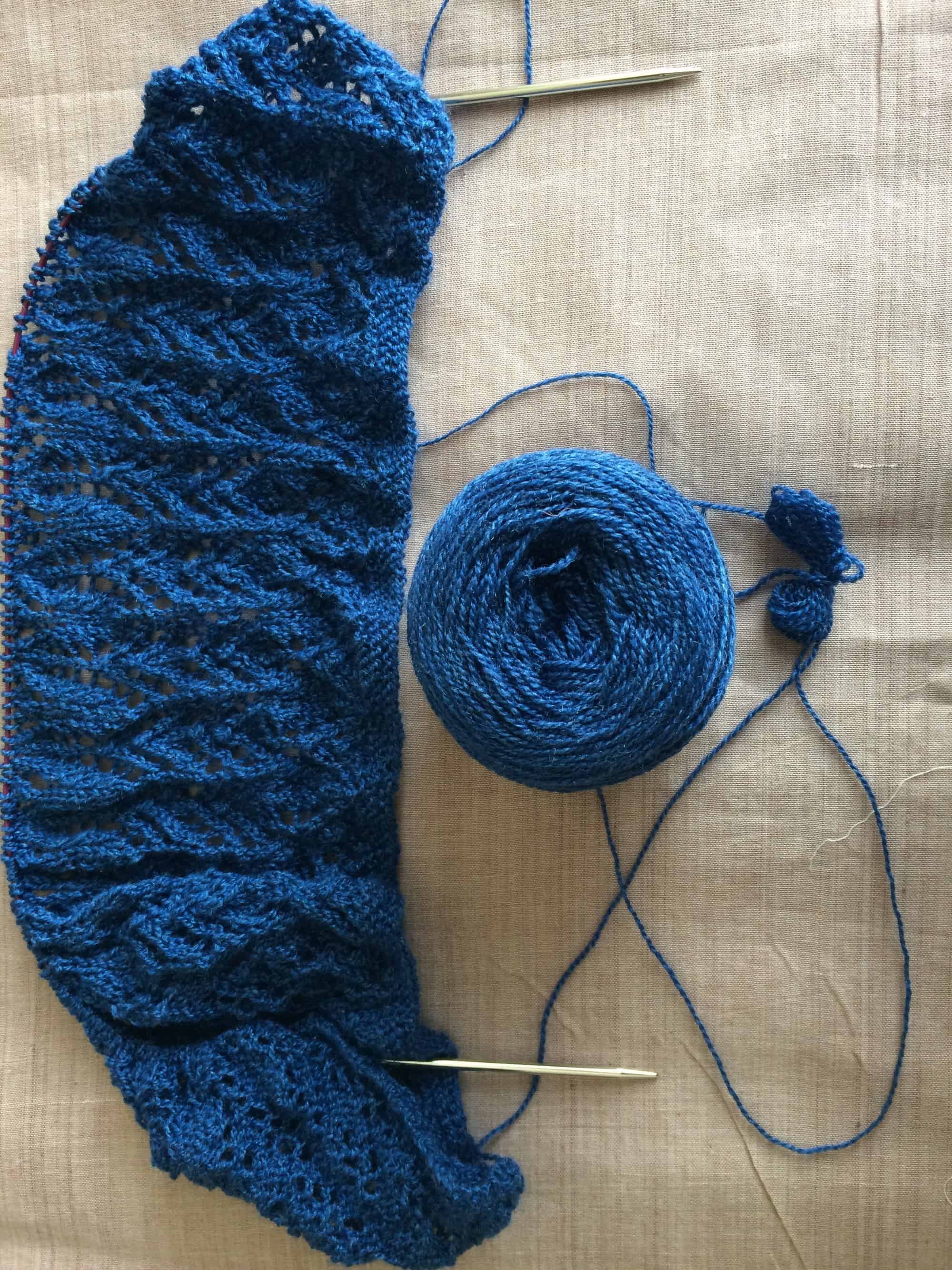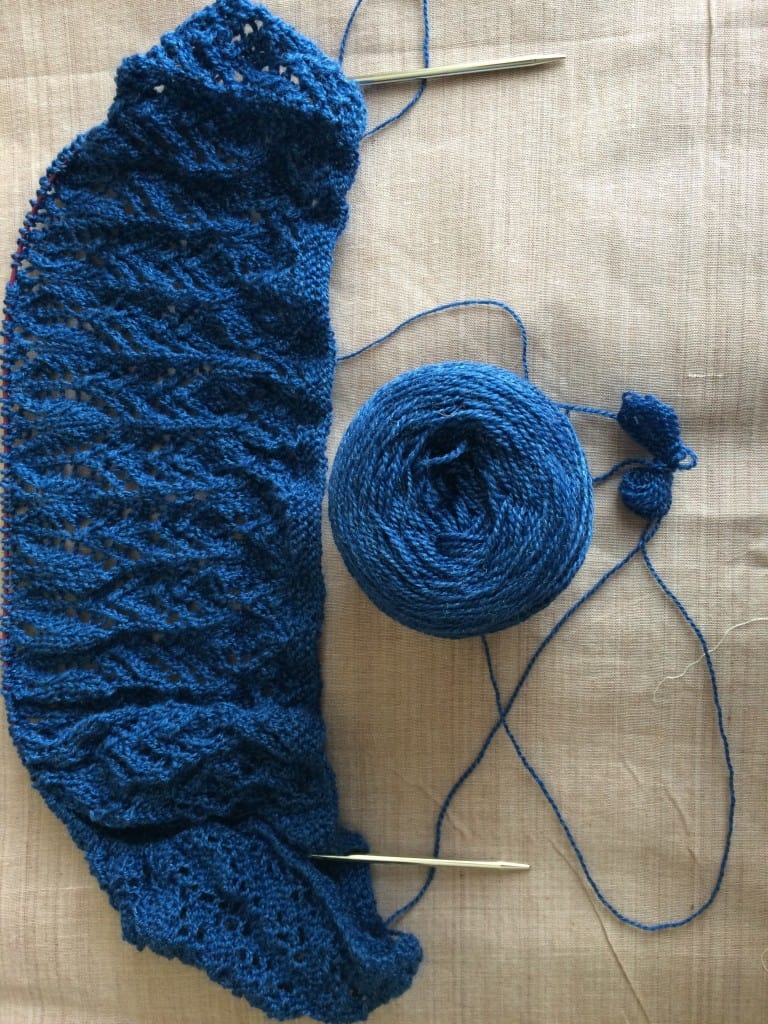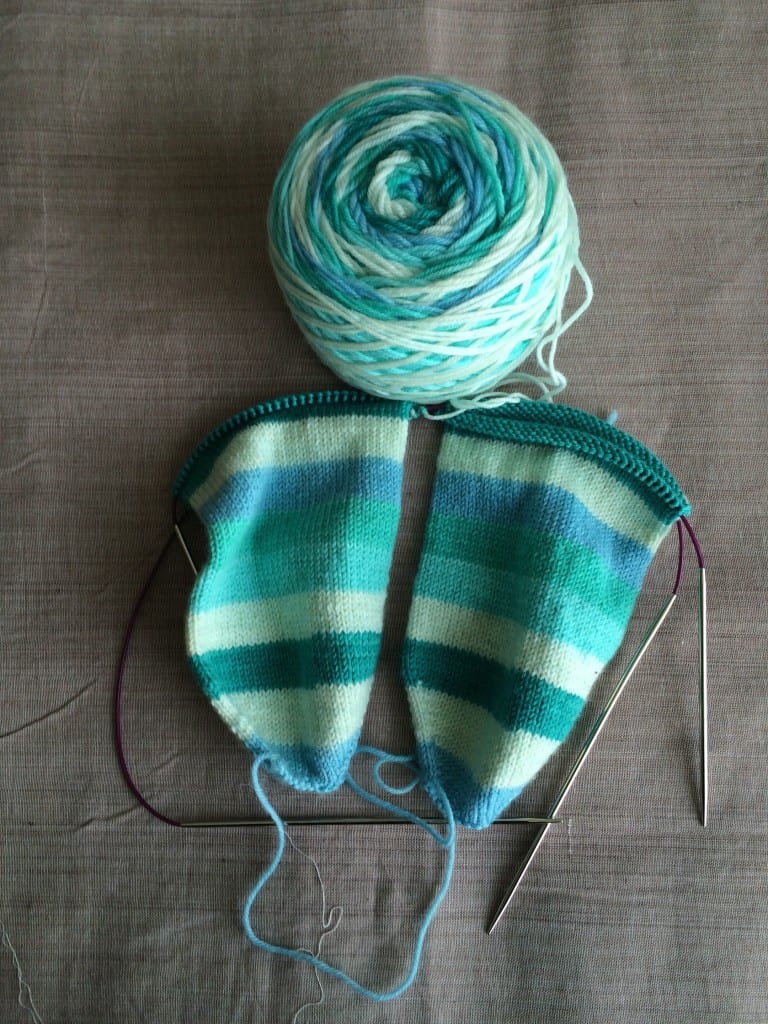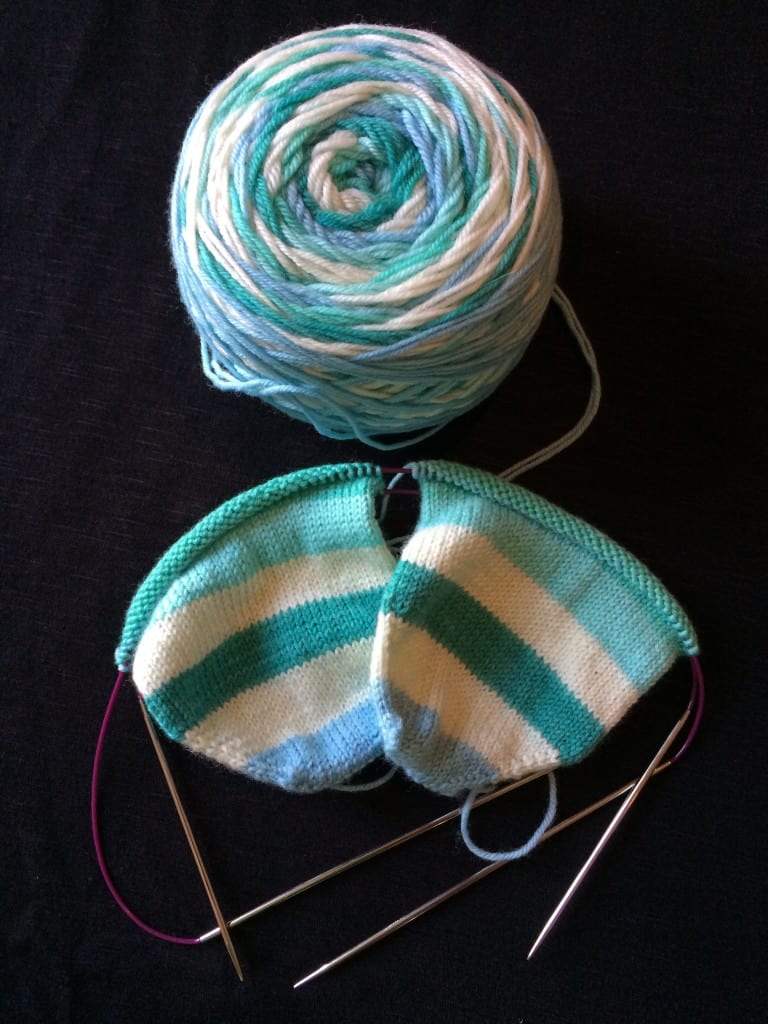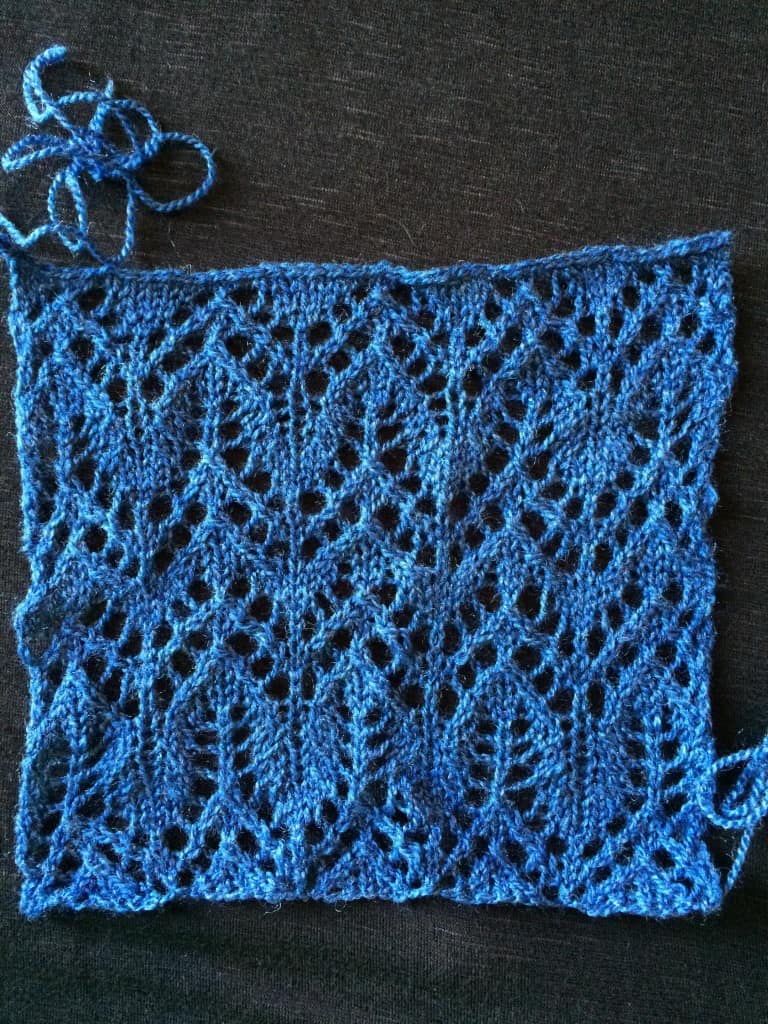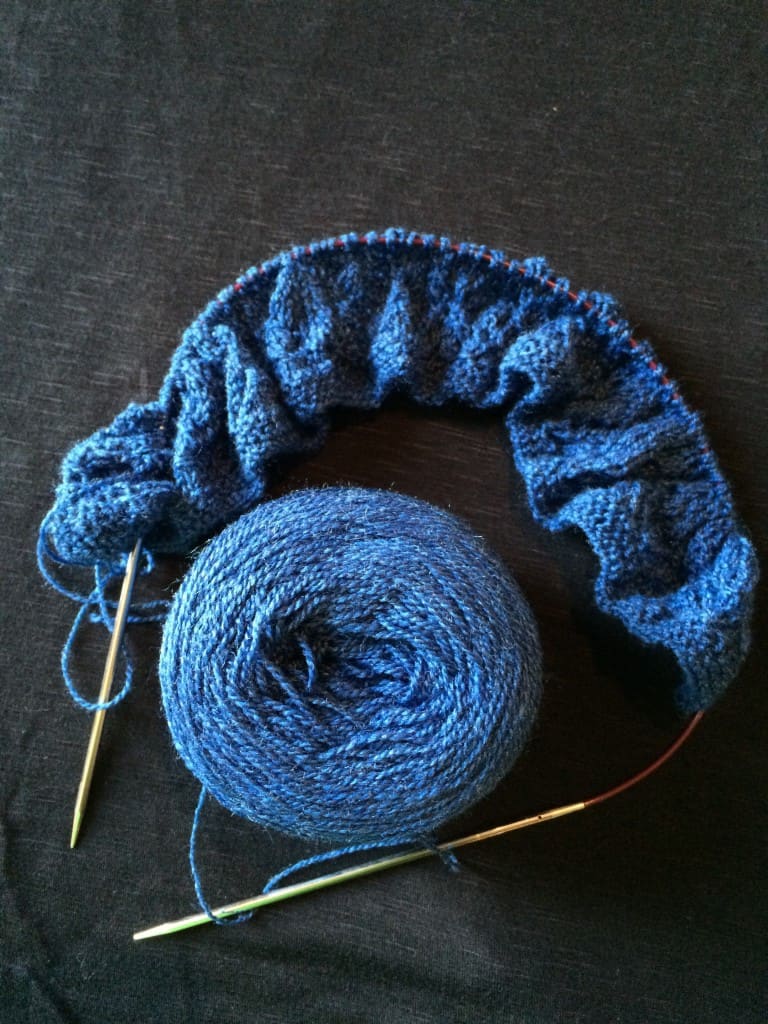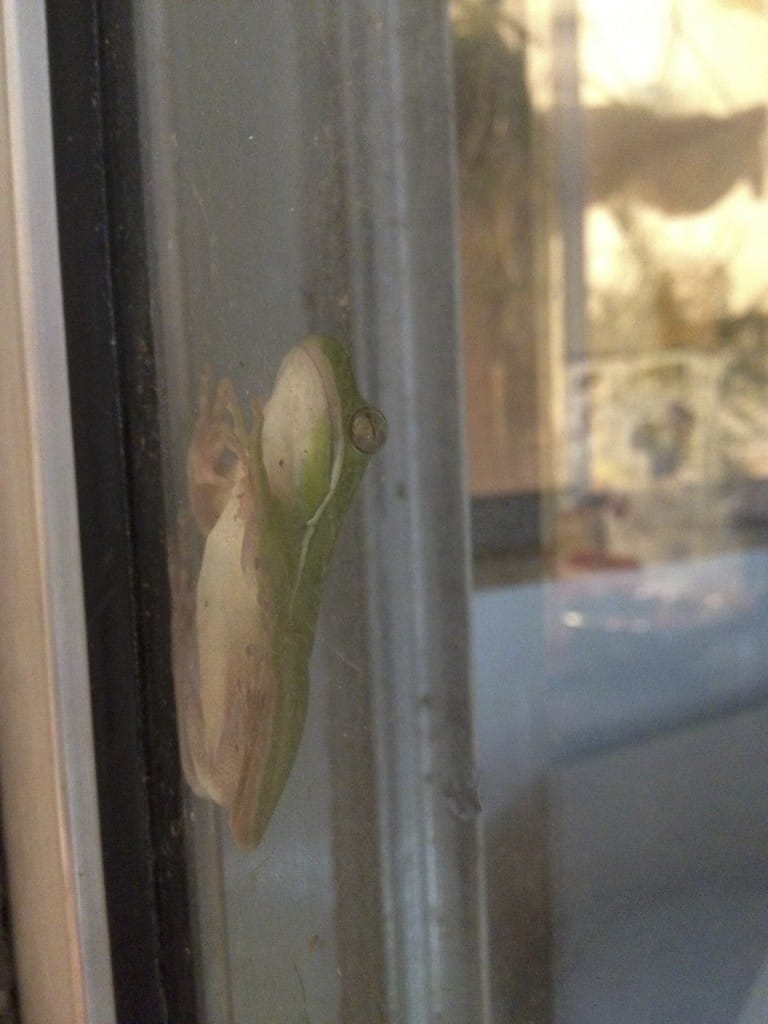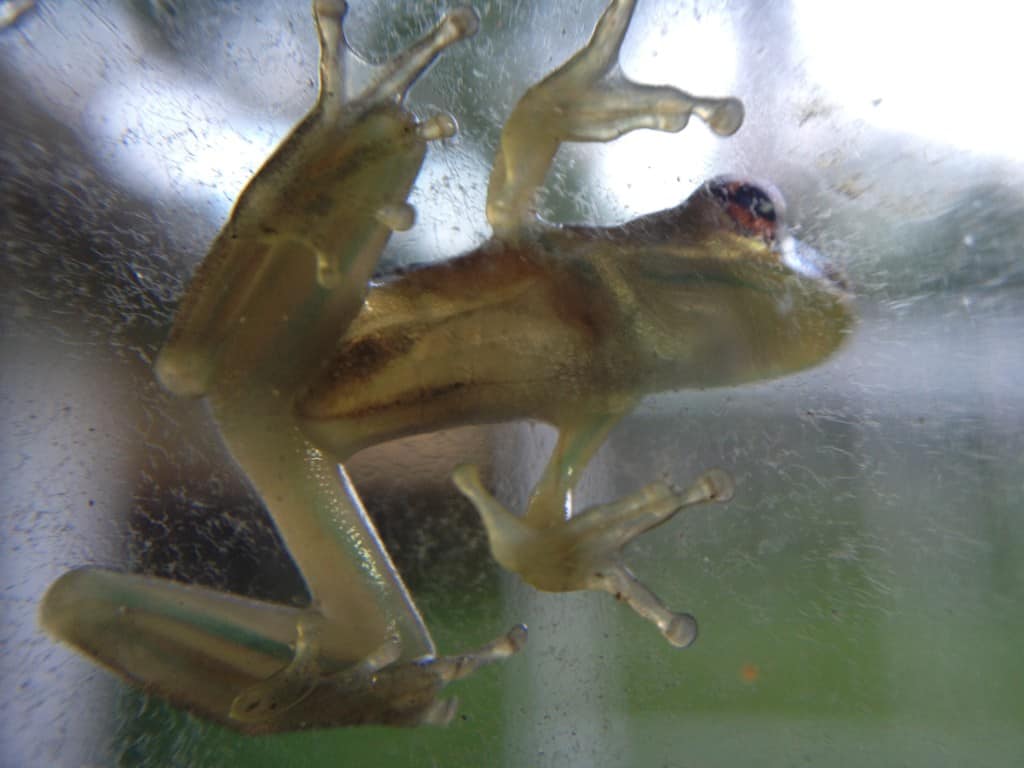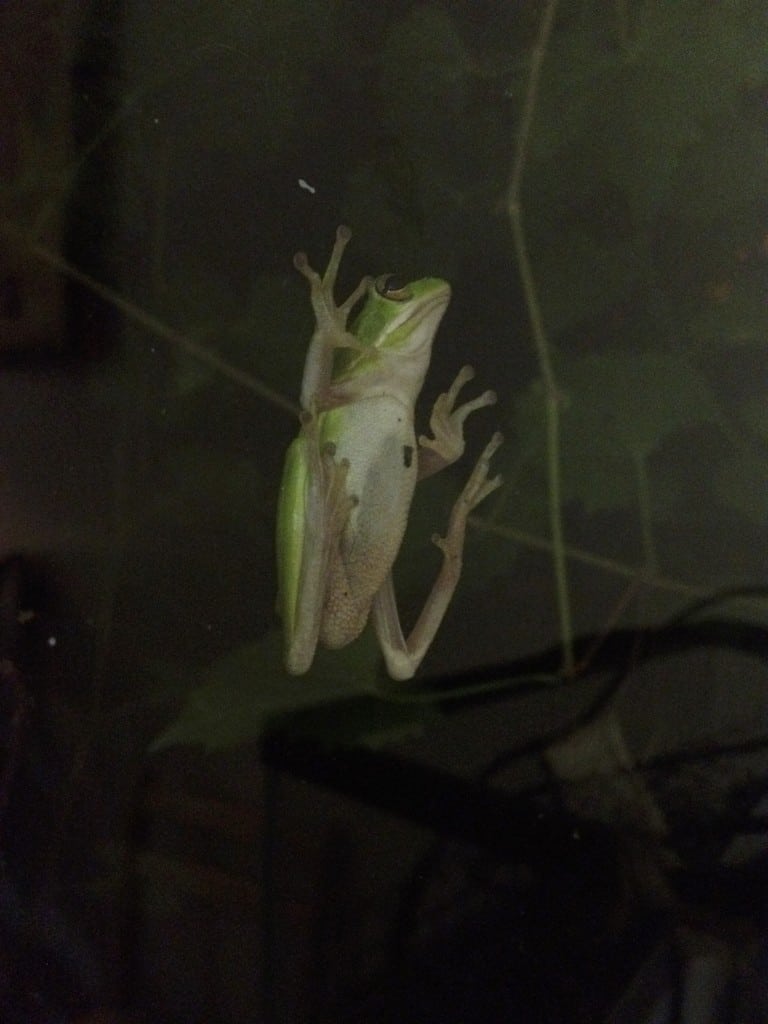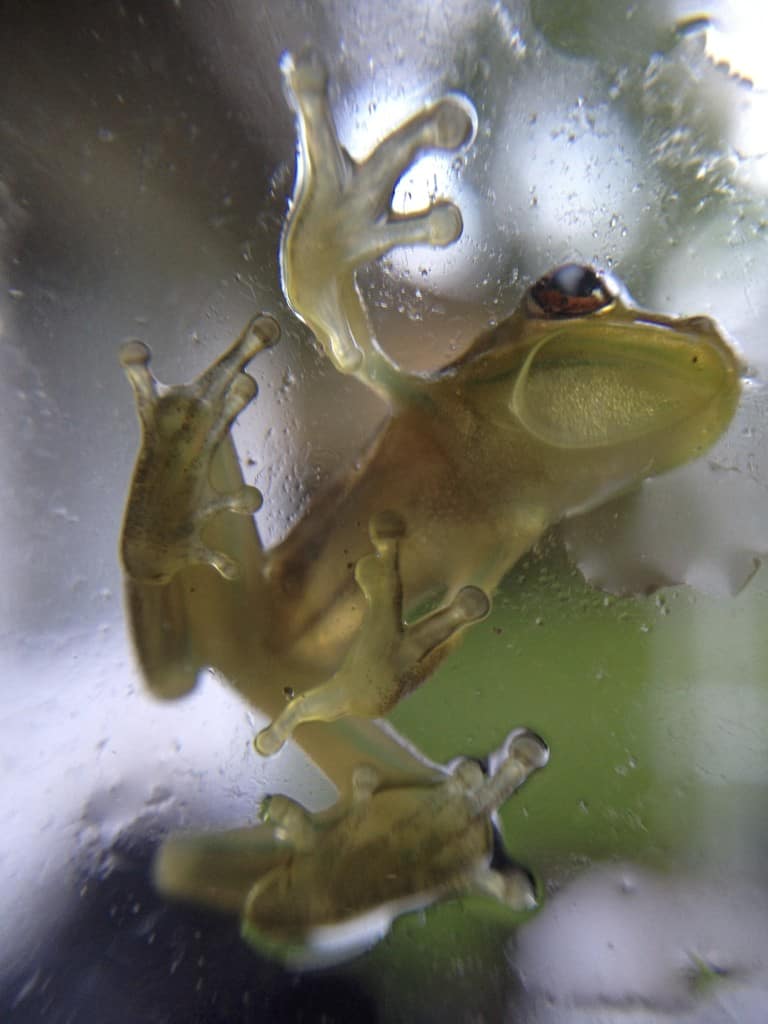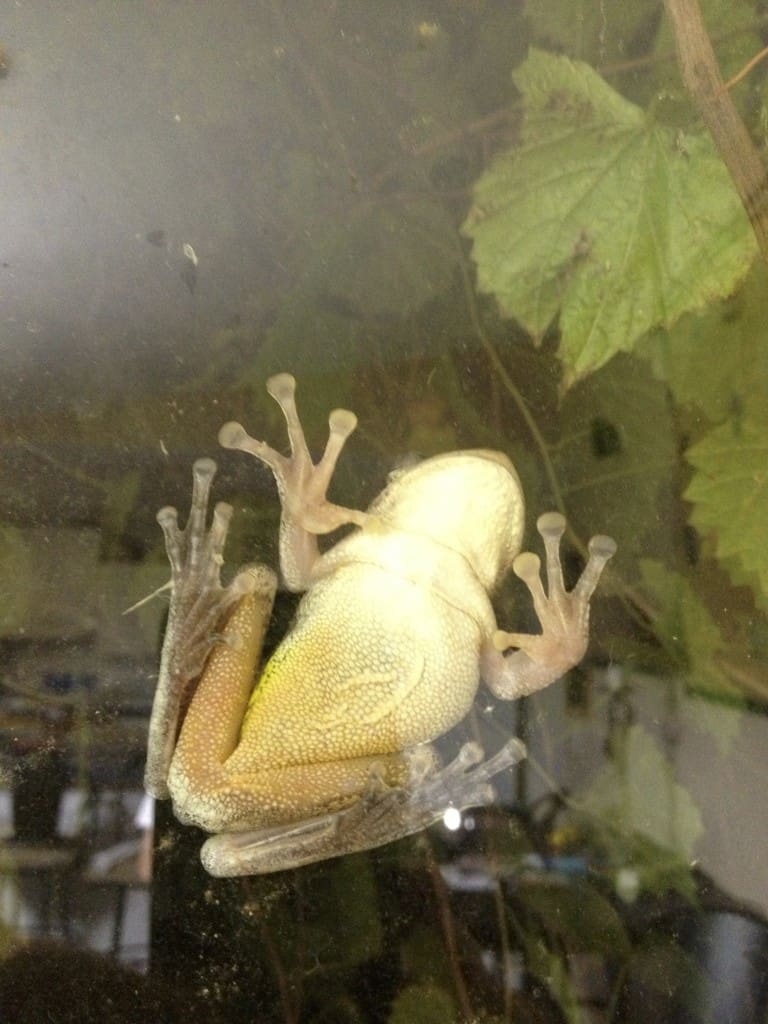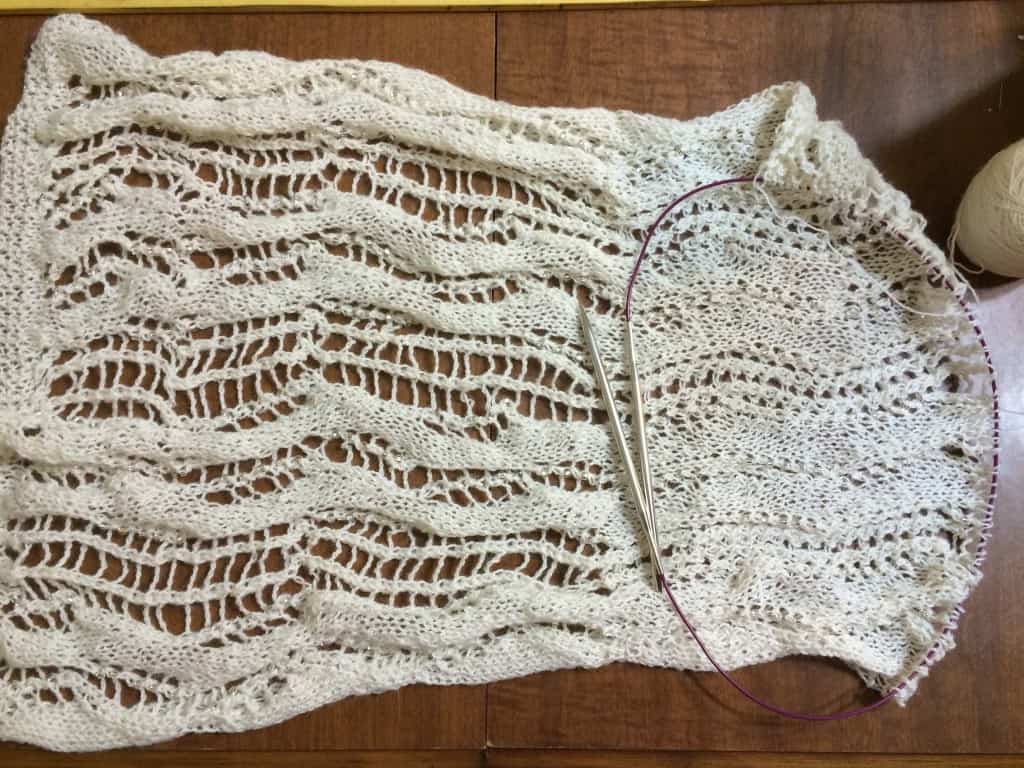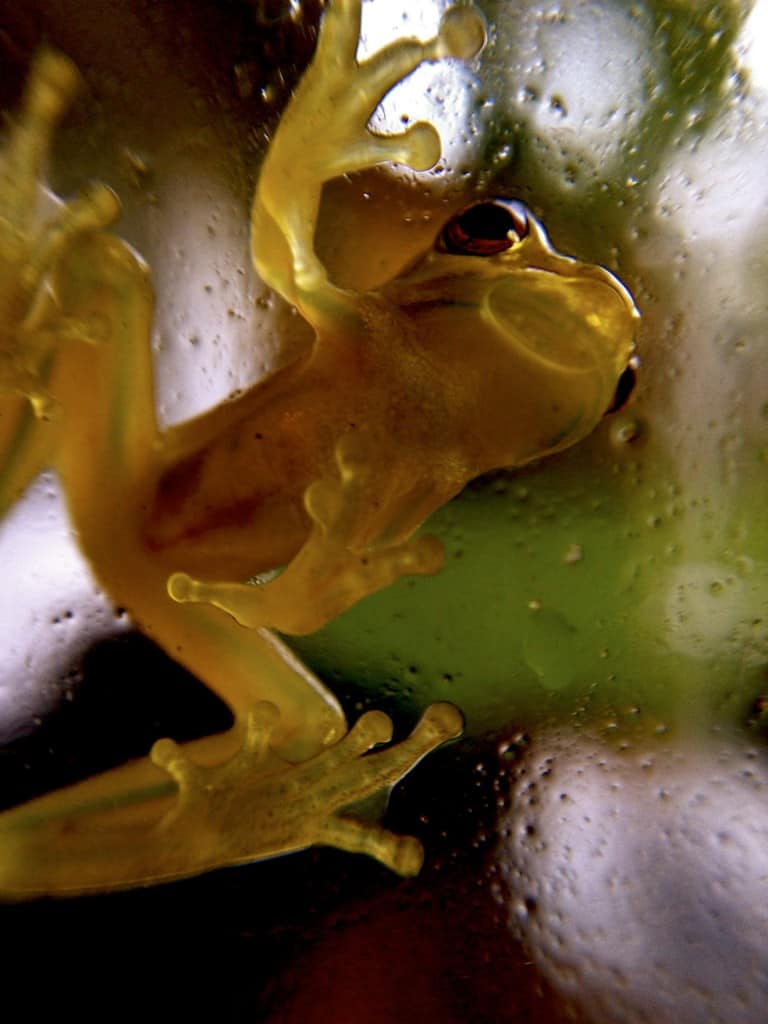I’m home from India, but continuing to work on the same two projects! I’m also starting to work on the TKGA Master Hand Knitting Level 1.
Super Secret Shawl
I’ve now completed 3 repeats of the pattern.
Splash Socks
I hoped to finish these while traveling, but while in India I spent most of my knitting time on the shawl, leaving these socks for the flights. The trip home involved 20+ hours actually on planes, with little to no time on layovers. I dozed off and on throughout the trip home, leaving less time for knitting than I had planned. Still, I got 5 stripes done on the trip home. Since I hadn’t brought appropriate waste yarn to mark the heels, I just kept knitting. I’m going to steek for heels — the first time I’ve ever done that!
TKGA Master Hand Knitting Level 1
I purchased the Master Hand Knitting Level 1 at the end of February and blogged about it in mid-March. When I discovered that we were going to India, I decided I wouldn’t work on the program until I returned. However, before we left, I did make myself a detailed checklist, breaking down each step of the project. Now that I’m back from the trip, I want to focus on finishing Level 1. I have an extremely ambitious goal: mail off the Level 1 binder by the first week of June. The reason for this ambitious goal is that I will be attending the TKGA Conference in San Diego July 21-26. If I can get Level 1 mailed off by the first week in June, it’s possible (though tight) that I might get the reviewed binder back before I go to the conference. Since I’m attending the Master’s Day program on July 21 and taking a workshop with Arenda Holladay, I’ll have the opportunity to ask any questions I have regarding necessary corrections for Level 1.
My personal approach to Level 1 is to research all the questions relevant to a swatch and write draft answers prior to knitting the swatch. Then I knit and block the swatch and edit the answer based on the experience of knitting and blocking. Yesterday, I did the research for the blocking report and wrote a draft that includes all the information other than how I blocked the swatches. Today I did the research for the first question and wrote a draft answer. As I write, I am compiling the References sheet that is one component of the binder. Every time I use a new source, I add it to the References section immediately. I expect to take significant time to edit the written work after all the swatching is complete. Proceeding in the manner I described makes that easier because I won’t have to switch back and forth between writing and editing. Switching back and forth slows me down considerably!
My single biggest worry about the swatches is that there will be cat hair all over them. The directions specifically say that the swatches should be free of pet hair. This seems like an impossible standard in my house. We’ve got three very cuddly cats in varying colors that mean no matter what you are wearing, the cat hair stands out from a mile away. Since we got back from India, they are even more cuddly than usual. They were well cared for while we were away, but they obviously missed us!


